Fairy Tales & Fables Part 1: Little Red Riding Hood, The Three Billy Goats Gruff, & The Three Little Pigs
There are so many reasons for parents to read fairy tales and fables to young
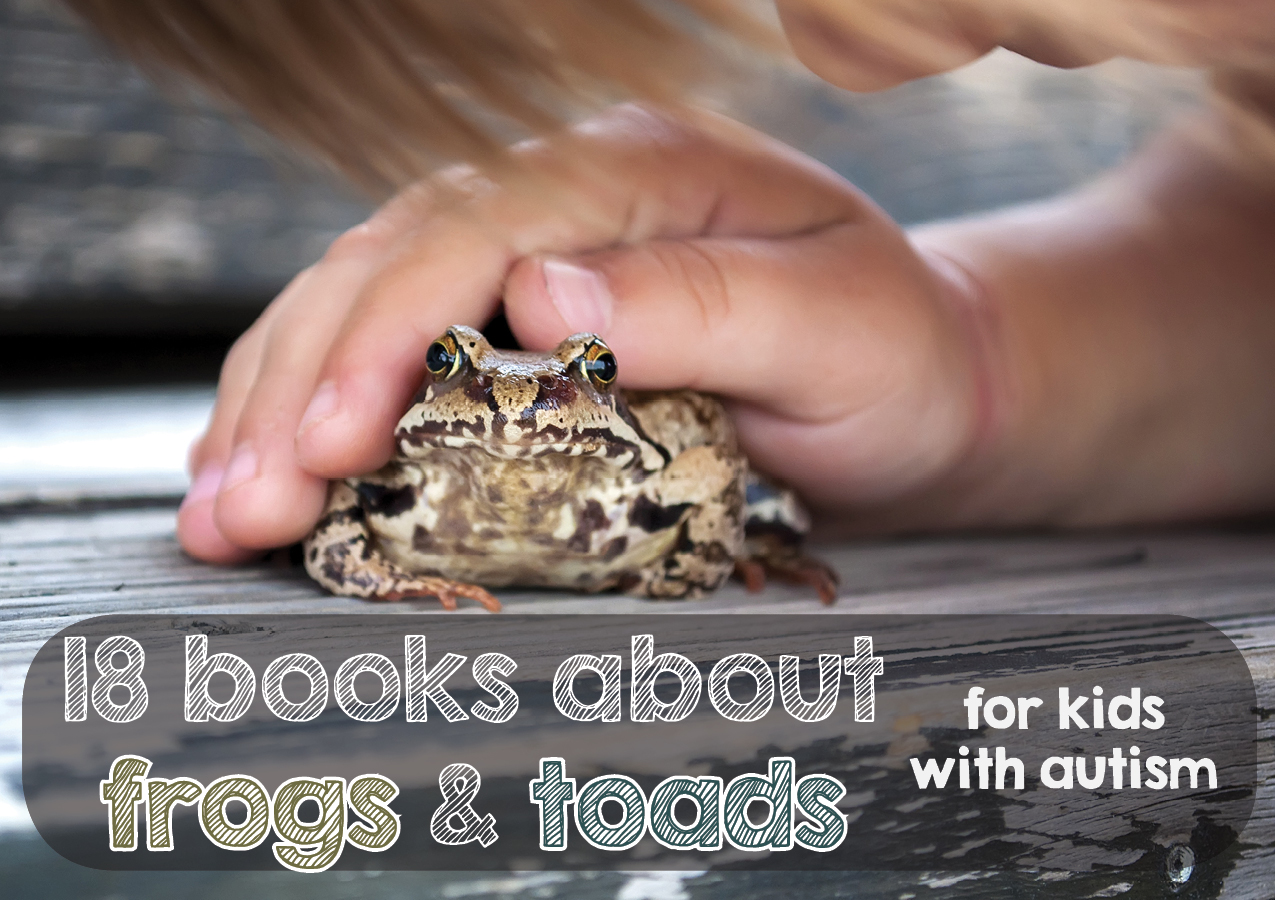
My 5-year-old autistic twins, like many people with autism, have some very specific, very intense strengths and interests. And I love this about them! Their passions bring them joy and provide all kinds of opportunities for connections to the world around them—including reading.
My son Harry really, really loves animals. Every day he spends a serious chunk of time reading The National Geographic Animal Encyclopedia, and lately he's been paying particular attention to the chapter on Amphibians (current favorite = the Goliath frog). My other son Luke can't read yet and doesn't stare at encyclopedias (and he isn't as fussed about animals either), but quite a few of the books on this list are "Luke books" regardless!
Since it's spring, I thought it was a good time to do a list for the animal-loving kids out there that can tie into spring-themed school units on frogs and toads and their lifecycles. Enjoy!
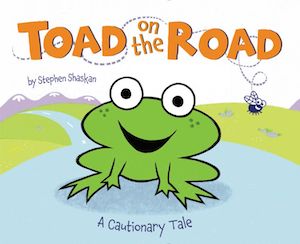
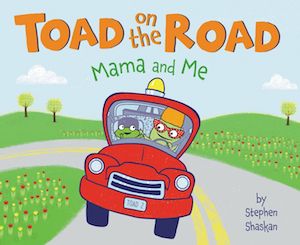
HarperCollins (2017), hardcover, $17.99
HarperCollings (2018), hardcover, $17.99
Toad on the Road was my favorite new release in picture books last year. My son Luke became so obsessed with it that I bought his school a copy so he could read it there too.
Using a predictable structure, the story centers on an adorable little toad who plays dangerously in a roadway. In each iteration, we see the silhouette of a vehicle approaching. The rhyme scheme (which often uses assonance instead of true rhymes) provides an aural clue before we turn the page to discover what vehicle is approaching with its animal driver. SKID! SCREECH! BAM! The vehicle is wrecked, but the little toad is always unscathed. Finally mother toad arrives to scold him for not playing safely.
For kids working on safety awareness, the repeated line "You could get hurt! That's no place to play." is a welome script for the arsenal. But more than anything, this book is a high-arousal book that grabs a kid's attention with its silliness and physical comedy.
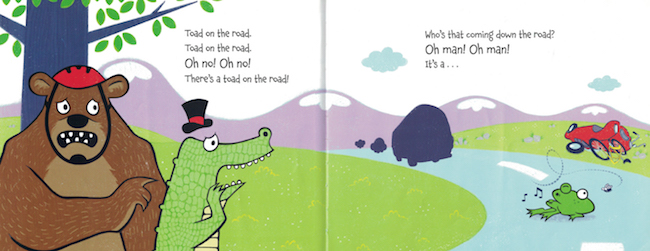
In the strong sequel, Toad on the Road: Mama and Me, the little toad is back, this time driving around with Mama Toad in her tow truck and helping animals along the road with their various AAA emergencies. The structure is nearly identical to the first book, which makes this extra easy to warm up to when kids already love the first installment.
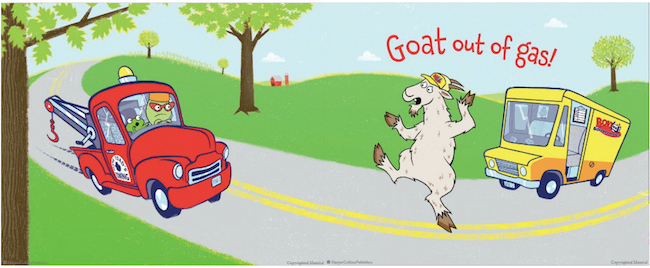
The entire series is enormously appealing to kids who like animals and/or vehicles and who also enjoy a lot of action at storytime.
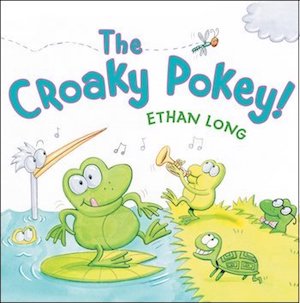
Holiday House (2011); hardcover, $14.95
Put your right hand in,
Put your right hand out,
Put your right hand in,
And wave it all about,
Hop the Croaky Pokey
As we chase a fly around,
Right in the froggy's mouth!
My son Luke will actually run into the bedroom for storytime if I ask him if he's ready to do the "Croaky Pokey." This slapstick twist on the Hokey Pokey is magic reading time appeal for kids who are familiar with the song already.
With each verse, the frogs try to catch a fly (WHAP!)—but always miss.
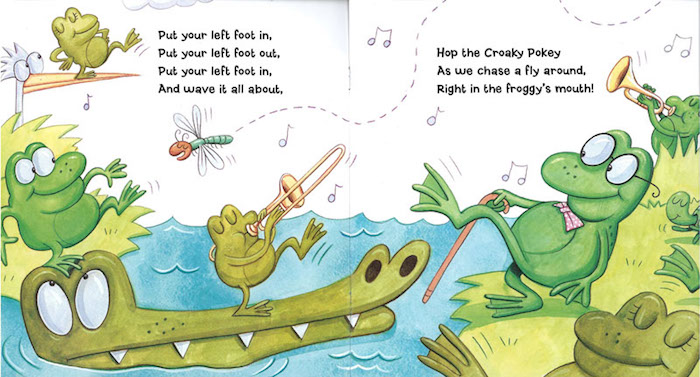
Things get even sillier at the end, when an attempt by all the frogs to catch the fly simultaneously leaves them tongue-tied. In a fun twist, a fat, pink fish gets the fly instead (SLURP!).
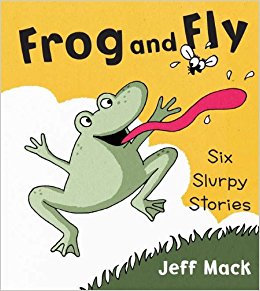
Philomel Books (2012), hardcover, $12.99
When I interviewed Jeff Mack for this blog last year, I told him that I thought Frog and Fly was a graphic novel gateway drug for preschoolers. I still think that, and the book holds a special place in my heart because it was the first book that Harry chose to take home from the library on his own, and one of the first books he was able to read independently.
With extremely simple cartoon panels, Frog and Fly tells six little stories about a frog and a fly that are all variations on a predator/prey theme—with a lot of physical comedy.
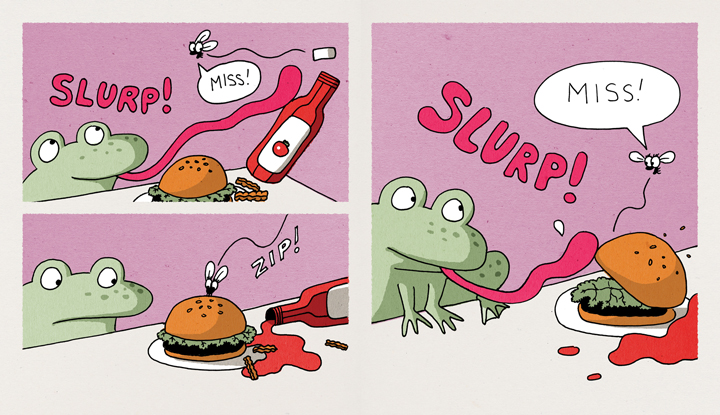
True to the cartoon form, there are very few words in this book, which makes it perfect for emerging readers (or hyperlexic kiddos) who are picking up sight words. It is also a useful book for dialoguing with a child about what is happening in a story and working on sequencing and cause/effect language.
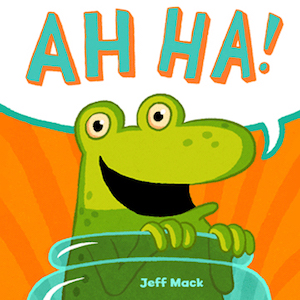
Chronicle Books (2013); hardcover, $16.99
Another of Jeff Mack's genius books that feature simple, limited language, Ah Ha! is written using only the letters "A" and "H."
When I interviewed him, Jeff Mack explained:
"So you have “AAHH!” in one scene and “AAHH!” spelled the exact same way in another, but one is a scream and the other is a sigh. You have to look at the expressions on the characters' faces and the action in the pictures. So it’s a good way to teach kids about context and inflection."
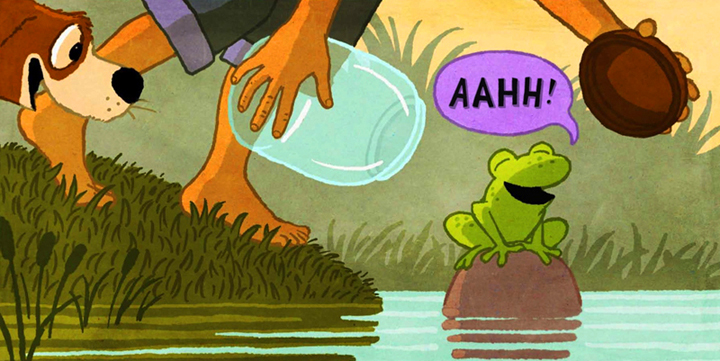
I certainly found this true for my son Harry, who has a somewhat flat affect and whose decoding sometimes outpaces his comprehension in reading. There are a lot of great visual clues and cues that Jeff Mack carefully deploys to aid a child with this. The art is simple and shows the action clearly and the expressions of the characters are non-ambiguous. The lettering is hand-drawn and the typography often changes to hint at the emotion and volume that is intended. And, of course, the cause-and-effect plot is predictable and funny.
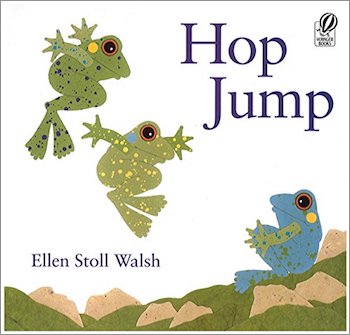
HMH Books for Young Readers (1996); paperback, $6.99
Ellen Stoll Walsh's beautiful collage art, usually set against empty or spare backgrounds, has always been a favorite of mine. It reminds me distinctively of Leo Lionni, who was one of my childhood favorites, without being overstimulating.
In Hop Jump, Betsy (a blue frog among green frogs) complains that all the other frogs ever do is "hop jump." Betsy wants to dance; she admires the leaves "leaping, turning, twisting—always different." But when she tries it, Betsy is admonished by the other frogs to hop and jump.
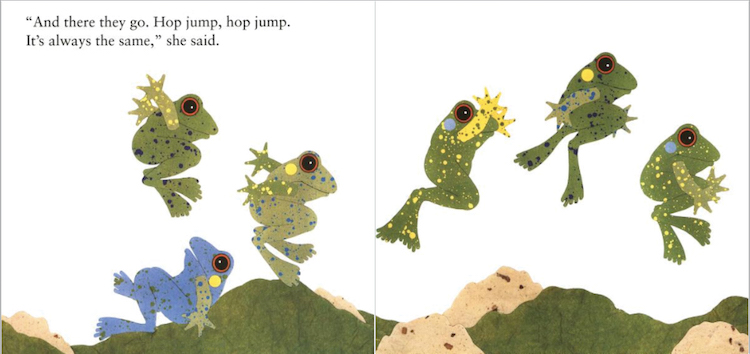
Betsy keeps dancing, and soon the other frogs become curious and some try dancing too. In the end, the frogs are able to appreciate hopping, jumping, and dancing.
I adore this book as a way to celebrate differences that can stand out in how we move our bodies. So many autistic kids spin and jump and stim. This is a perfect book for beginning an affirming conversation about these too-often stigmatizing differences.
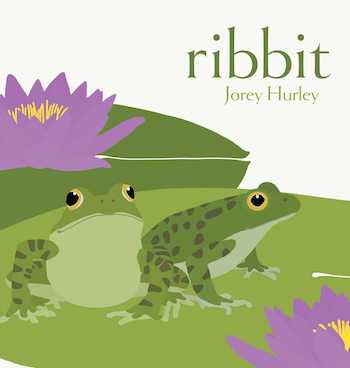
Simon Schuster/Paula Wiseman Books (2017); hardcover, $16.99
Using only one word one each two-page spread, Jorey Hurley shows us the lifecycle of the leopard frog. The book opens with a cluster of eggs ("wait"). Soon the eggs hatch into tadpoles ("hatch") and begin their metamorphosis ("grow" and "change"). They eat, dodge predators, and, as the seasons change, they hibernate. In the spring, the frog finds a mate ("ribbit"), and the cycle begins anew.
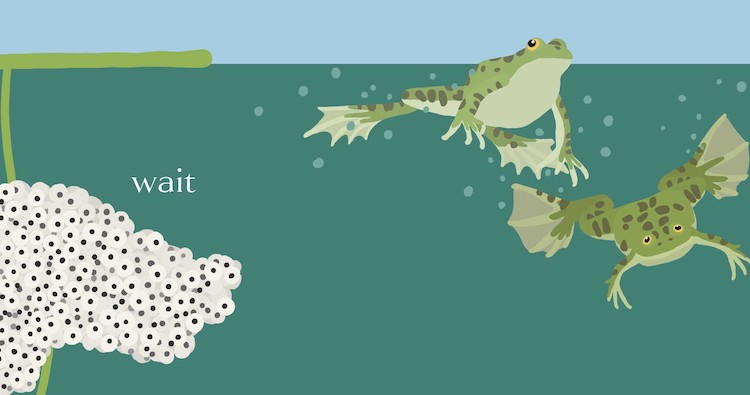
There is a lot to love about ribbit. The minimalist language provides great sight word practice and makes the book accessible for those for whom less is more. The writing provides straight-forward representations of the plot (save "ribbit," which is supposed to indicate mating—I told Harry that it was the frogs saying "hello" before they made eggs together).
Large solid blocks of a non-assuming teal color make an ideal watery background against a pale-blue sky that is easy to look at. There is also a nice interactive moment that requires turning the book vertically. The big downside, however, is the pace. Kids who have lower arousal levels will get bored. Still, this is an accessible and, for many, an enjoyable way to get extra practice with frog lifecycles—a near-ubiquitous academic element of preschool and kindergarten classes everywhere.
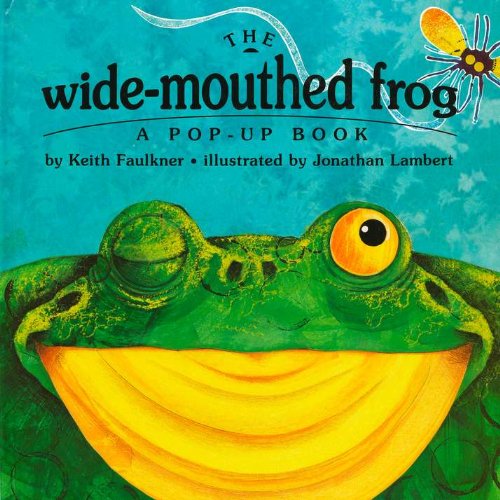
Dial Books (1996); hardcover, $14.99
Many will be familiar with the traditional story already. If not, you can get a more traditional take by checking out The Big Wide-Mouthed Frog by Ana Martín Larrañaga.
A wide-mouthed swamp frog asks the other animals in its habitat what they like to eat. "I'm a wide-mouthed frog and I eat flies," the frog says, and a pop-up shows the reader a long tongue with a fly stuck to the end and just how wide his mouth is. We meet other animals and see and hear about their favorite foods, but eventually things take a turn when we are introduced to an alligator who eats... "delicious wide-mouthed frogs." The clever wide-mouthed frog sucks in his lips to pretend his mouth is tiny, and the final page is a pop-up of his dramatic escape (SPLASH!).
It's impossible to easily scan a pop-up book, so here's a video by YouTube user Christine Hsu, so you can see what it looks like:
The simple story is easy to follow, and the plot and conflict are built around some basics about the food chain—a nice academic bonus. Obviously, the pop-ups and their movement provide a ton of interest and excitement. But I wouldn't purchase this book for a child who doesn't yet treat books gently or doesn't have the fine motor skills not to rip the pop-ups. Pop-up books are, unfortunately, fragile (and so almost never in library circulation), and this one is no exception.
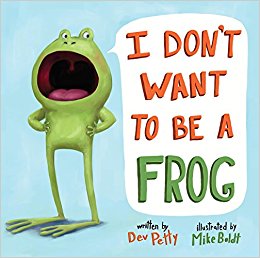
Doubleday Books for Young Readers (2015); hardcover, $16.99
A young frog is sick of being a wet and slimy frog and eating bugs—he'd rather be a cat. His father says, "You can't be a CAT. ...Because you're a FROG." The little frog next suggests that he might instead be a rabbit, a pig, or an owl, and his father patiently explains why each of these won't work for many reasons, including that he is a frog. Finally, a wolf appears and announces that he loves eating cats, rabbits, pigs, and owls, but not frogs. They are too wet and slimy and full of bugs. Finally, the tiny frog sees an upside.
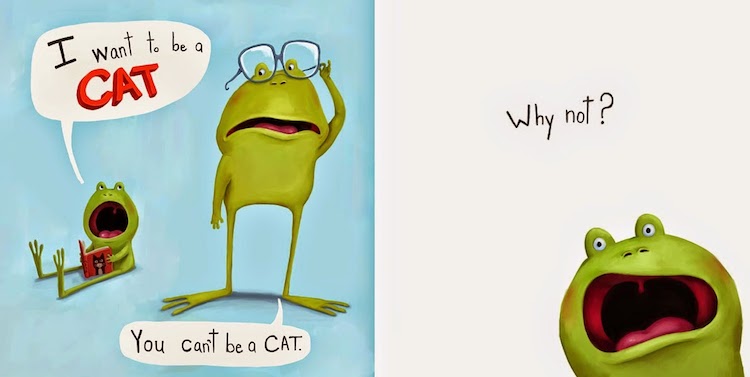
The plot is super-silly and my son Harry loved it. I enjoy the empty backgrounds and prominence of the hand-drawn typography. The facial expressions on the frogs are great, but the lettering really provides excellent clues for decoding emotion.
On the self-acceptance theme, it's ok. But it's not a perfect book. The upside of being a frog is the wolf's dietary habits. Where's the parallel for, say, an autistic kid who wishes they were NT? Also, I'd avoid this book if a child is very rigid about identity in an unwanted way (like about gender).
All said, I think this book is a lot of fun for most kids. It's funny, and that counts for a lot!
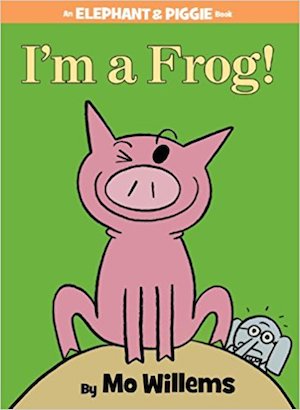
Disney-Hyperion (2013); hardcover, $9.99
This is my favorite book in the Elephant & Piggie series (which is saying something). Piggie comes hopping and ribbiting into frame and Gerald the elephant is confused. Piggie announces that she is now a frog. Gerald is terrified! Could he turn into a frog too? Piggie assures him that it's only pretend and teaches Gerald how to pretend too.
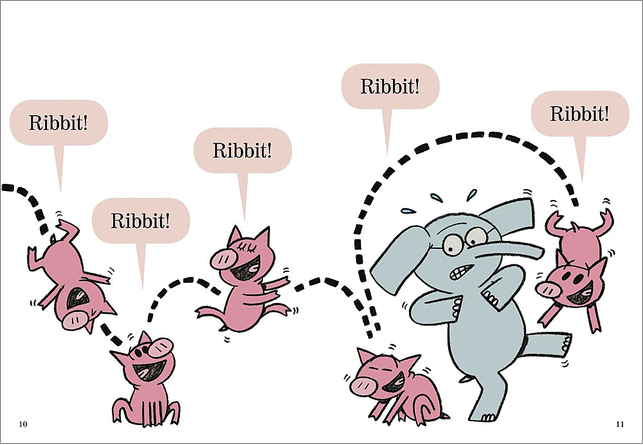
The straightforward explanation of what pretending is will surely be welcome to parents whose kids struggle with that play skill. Kids may identify with Gerald, who doesn't understand how to play yet, and is nervous about the whole thing, but learns to join in the fun in his own, unique way—and is not in any way shamed by Piggie.
As in all of Mo Willems' books, the typography perfectly telegraphs how to emote each bit of dialogue. My son Harry is just at the reading level for this series now, and it was a treat to watch him mostly get the feeling of each line right because of Willems' skill here.
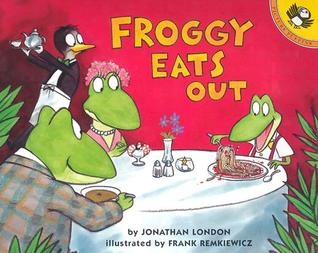
Puffin Books (2001); paperback, $5.99
I am a big fan of the entire Froggy series, but I think the books are at their best when Froggy encounters a new daily living skill (à la Froggy Gets Dressed) or a new social experience in his community. Froggy Eats Out is the one I picked to represent the series in this list because I think the challenges of eating in restaurants are so common for our families! However, be aware of the breadth of titles in this series exploring milestones like going on vacation, learning to swim, going to the library, visiting the doctor, having a babysitter, going on a playdate, and many more experiences.
In Froggy Eats Out, Froggy accompanies his parents for their anniversary to a fancy restaurant. There won't be any burgers and flies and he has to follow his mother's rules: "Be neat, be quiet, and don't put your feet on the table." But it's hard not to fidget and or make a mess when you have to wait a long time and none of the food is what you are used to. Froggy ends up hopping all over the restaurant and when he spies his friend Frogilina he gets so embarrassed that he ends up knocking his meal on to the floor. His parents don't get mad, they just relocate to a "fast flies place" and enjoy their day together.
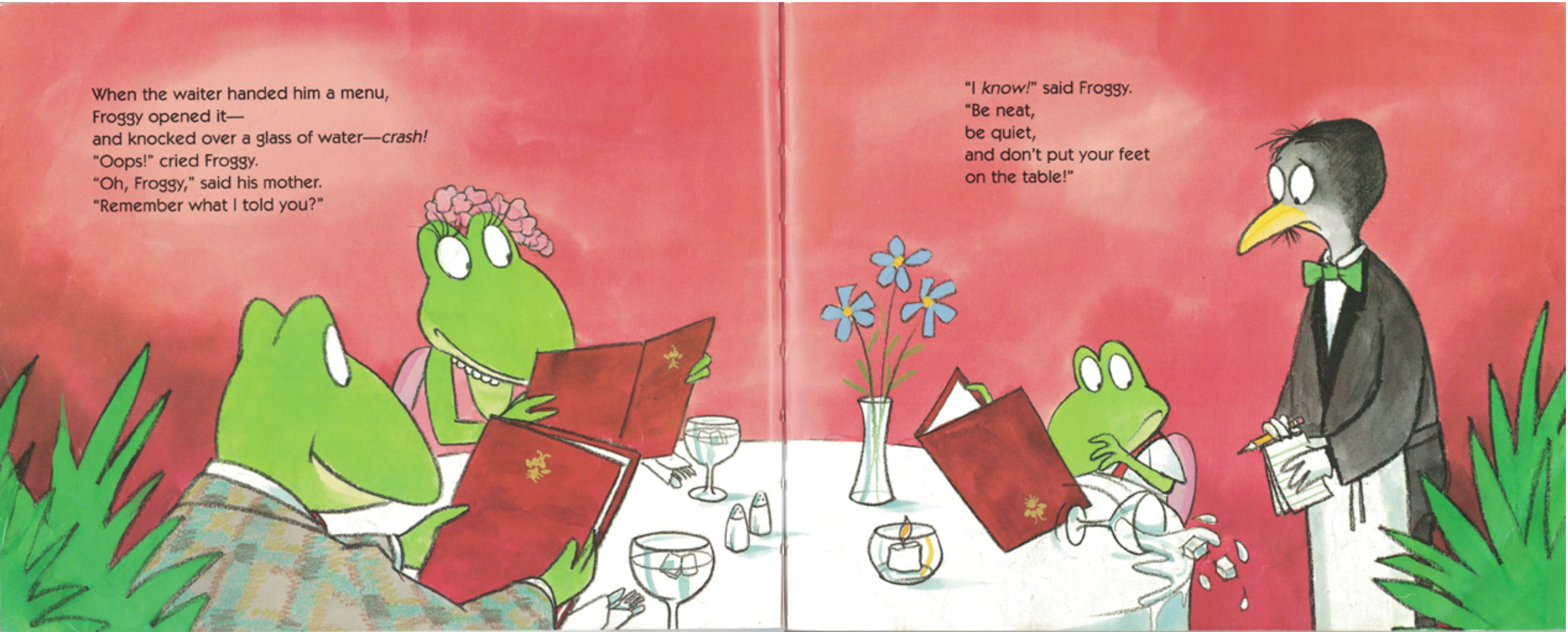
My son Harry loves this book. He thinks it's hilarious that there is a rule about putting your feet on the table.
I'm sure some will disagree with me about using this book as a quasi-social story since Froggy isn't "successful" at eating out at the fancy restaurant, but I really love this modeling of failure. Froggy tries and his family reacts to the unfortunate catastrophe with empathy and love. Children with autism have a lot of demands placed on them. They deserve to know that we love them even if they miss the mark the first time they try something new and hard.
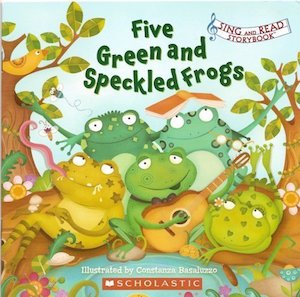
Scholastic (2008); School Market Edition
It's a singing book and a counting book, so I have my son Luke's attention. There are a few different picture book adaptations of the traditional song "Five Green and Speckled Frogs" out there, but this one is my favorite.
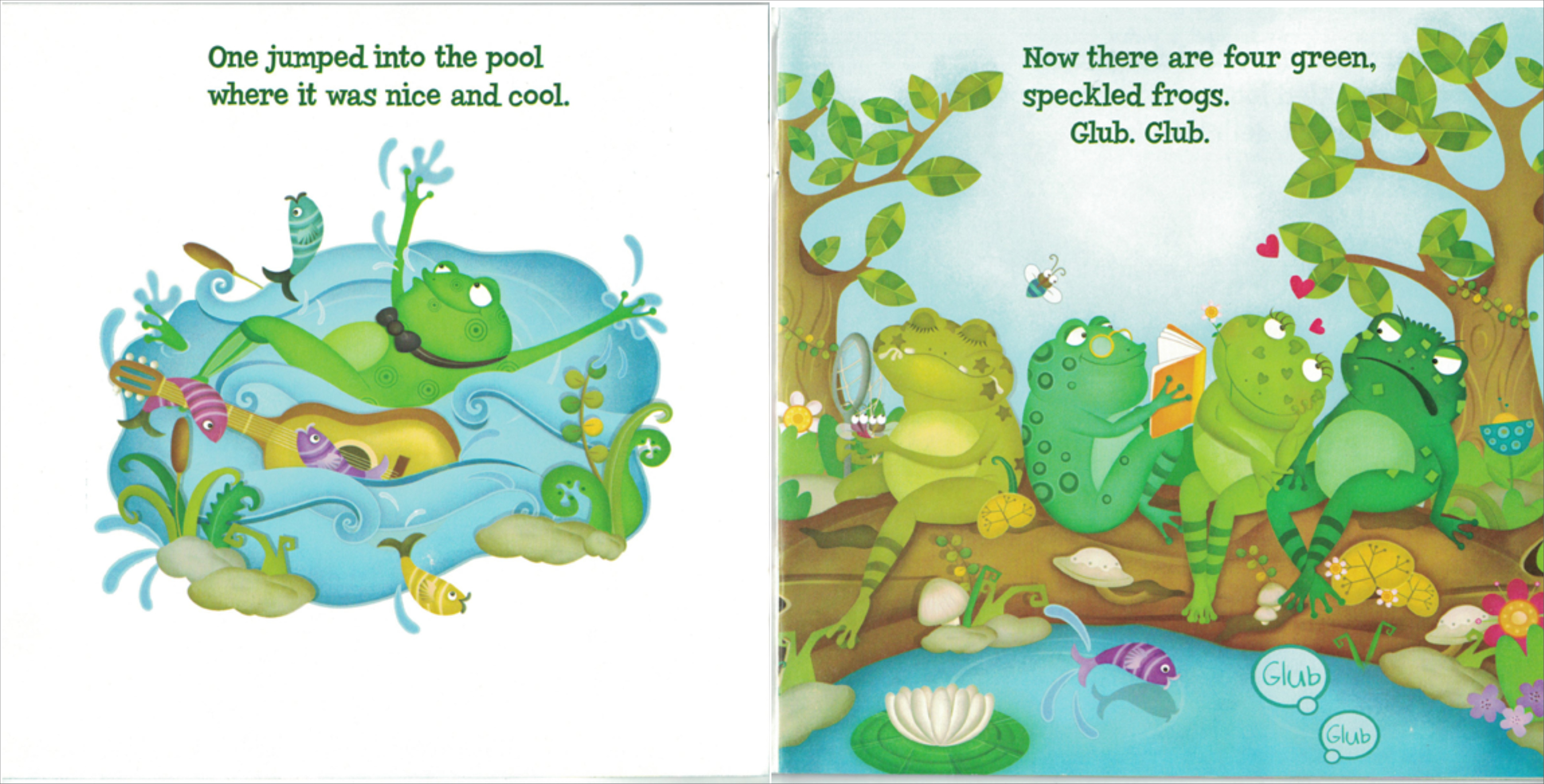
While the illustrations are a bit overwhelming on a sensory level (so many patterns), the frogs are cute and funny and it is easy to count them. Occasionally a page will set the focal image against a white background, which provides a nice visual oasis from the many greens. Importantly for Luke, the lyrics are identical to the way he (and many other kids out there) learned the song on YouTube. "Glub Glub" and "Yum Yum."
This is a "School Market Edition", meaning that the book isn't available in consumer retail stores or libraries. However, it is very easy to find inexpensive used copies online.
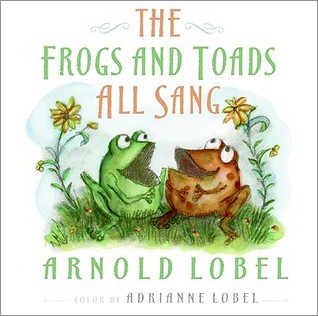
HarperCollins (2009); hardcover, $16.99
I'm always on the lookout for standout illustrated poetry collections. Short poems are great for autistic kids. It's okay to have a short attention span when you read them, and there is usually some underlying structure or rhyme scheme.
The Frogs and Toads All Sang is a sweet, funny posthumous publication. The ten poems included were discovered in the papers of Arnold Lobel, best known for his award-winning Frog and Toad series, by his daughter, who illustrated the collection with easy watercolors framed against white backgrounds. I love all of the poems, but I particularly like There Was a Frog, about a frog who drives a fast car and doesn't stop at traffic lights. Another favorite is Miss Frog Went in the Kitchen, about a frog who bakes while her little frogs watch and then eats it all herself.
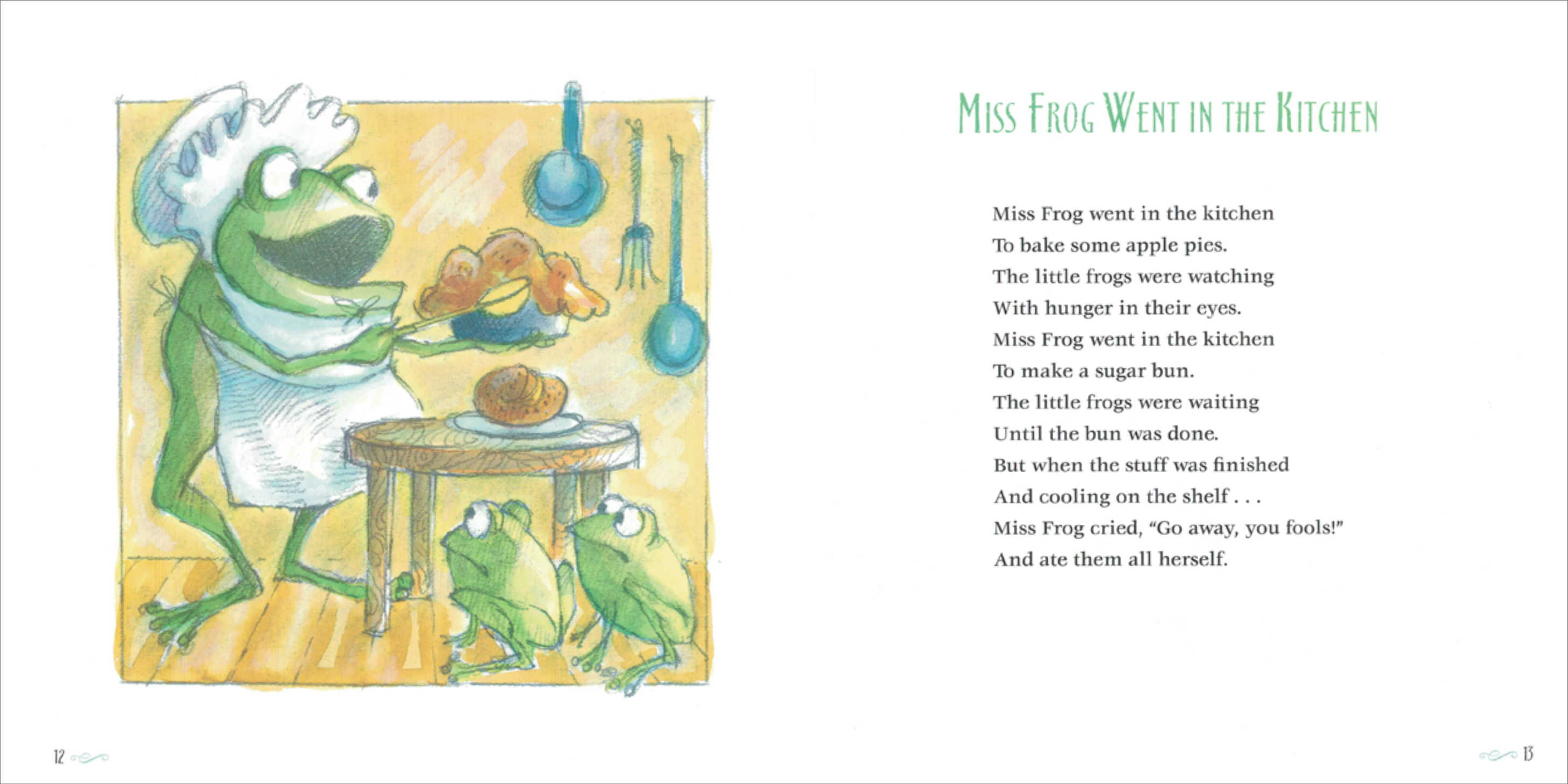
A few of the poems rely on jokes that might go over kids' heads. The poem Night for instance is about two toads who acquire two clocks so that if they wake up in the middle of the night they know it's still nighttime. The illustration shows all the ways this is ridiculous: 1) The two toads sleep side by side and don't need two clocks, and 2) The night-sky is above them and they don't need a clock to tell that it isn't day yet! I had to explain all this to my kids and point at the illustrated context, but once I did, they were let in on the fun. Never hesitate to explain a joke!
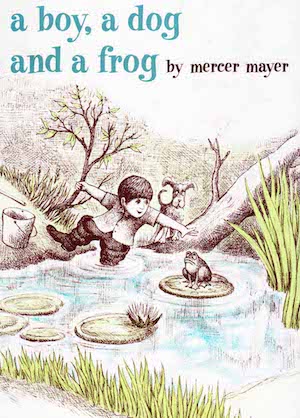
Dial Books, 1967; hardcover, $6.99
Wordless picture books are ideal for kids who have problems with delayed echolalia (scripting). To read the book aloud, you have to narrate what is happening in the pictures, and it is nearly impossible for an adult reader to accidentally do this the same way every time they read the book to the child. This variation in delivery helps kids who might otherwise memorize some specific wording to instead engage with the story.
A boy, a dog, and a frog is a sweet and simple story about a little boy and his dog who go down to a pond and try, quite unsuccessfully, to catch a frog. After some spectacular failures they retreat to the boy's home to take a bath. The frog discovers that it is actually bummed about this. It enjoyed playing cat and mouse with the boy and his dog, so it decides to follow them to the house and jumps into the tub for bathtime.
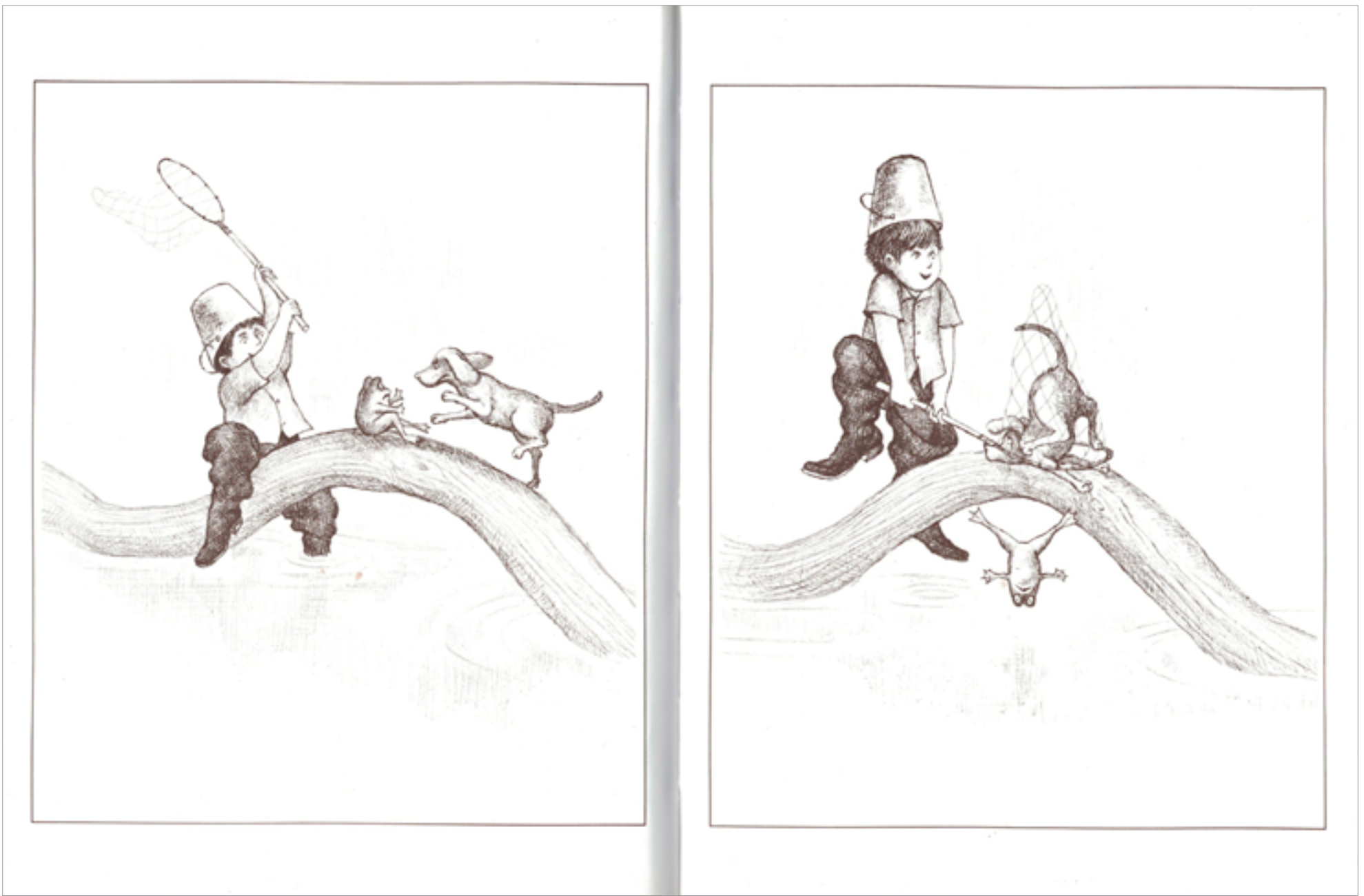
The illustrations are simple pencil drawings against a white background. The background imagery (the pond, the forest, the house) is consistently lighter. Mercer Mayer used more pressure to draw the three characters in each scene, which ensures that they stand out. It's a great series for a kid who is easily overwhelmed by visuals, but without defaulting into boring. The action is slapstick and the pace is quick.
First published in 1967, a boy, a dog, and a frog was the first in a highly successful and beloved series of wordless picture books about this boy and his animal friends.
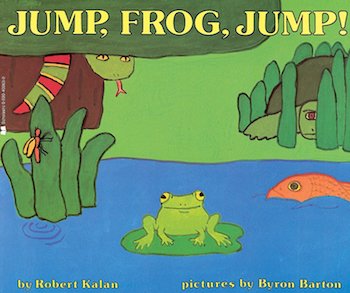
Greenwillow (1989); hardcover, $16.99
Jump, Frog, Jump! has one of my favorite structures: the cumulative poem (sometimes called a chaining story). Every page adds a line to the poem and the entire poem is recalled and built upon. These stories are fabulous for exercising a child's working memory skills. The most famous cumulative rhymes are "The House That Jack Built" and "Who Killed Cock Robin."
This story also, brilliantly, adds a repeating call and response element. As various predators and other enemies threaten the frog, the poem always asks, "How did the frog get away?" And the child learns to reply "Jump, frog, jump!"
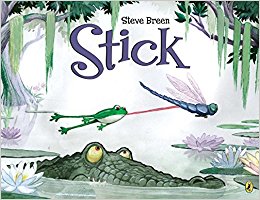
Dial (2007); hardcover, $16.99
Stick is a little bayou frog with an independent streak. He likes to do things without Mom's help. But one day when he tries to catch a mosquito, his tongue sticks to a dragonfly and he's pulled up and away all over New Orleans having adventures. In the end, alone on a pier with the sun-setting, and desperate to get home to his mother, he learns to ask for help.
The story is told with barely any words at all through panels of action, like a graphic novel. Breen is a two-time Pulitzer Prize winning editorial cartoonist, and his skill is on full display. The art captures the eye with its breathtaking Louisiana swamp and New Orleans cityscape landscapes, all the while foregrounding the animal characters and showing the physical comedy and action easily. There is a lot going on, but it's still not too busy for my son Luke.
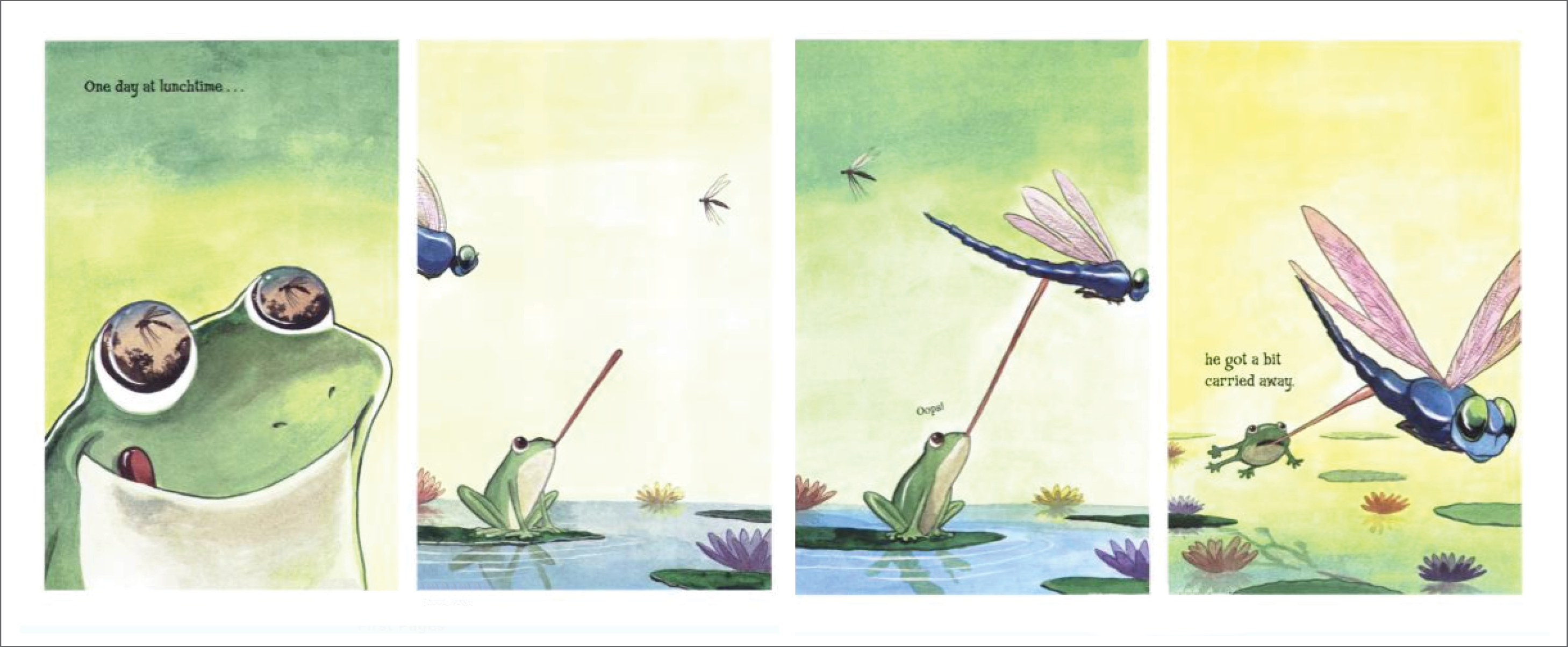
There is a good lesson here for the self-directed child, especially if wandering or elopement is a concern, as it is for both of my children in different ways. In reading this to my sons, I make sure to spend time emphasizing those final pages in which Stick realizes that he needs to ask for help to get home.
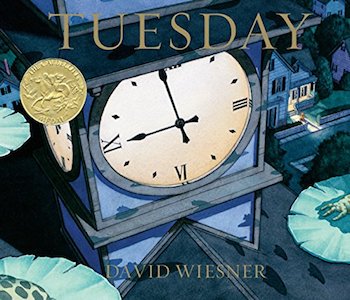
Clarion Books (1991); hardcover, $17.99
This classic, Caldecott-winning picture book has sold millions of copies for good reason. It's captivating.
The book contains only a handful of words. It begins on "Tuesday evening, around eight". We see frogs, levitating on their lily pads, flying-carpet style. The frogs fly into a suburban town and have whimsical, dreamlike adventures. The next morning, they return to their pond like normal frogs and confused humans try to sort out what happened. The final pages of the book show the "next Tuesday." Pigs are beginning to hover near a farm house.
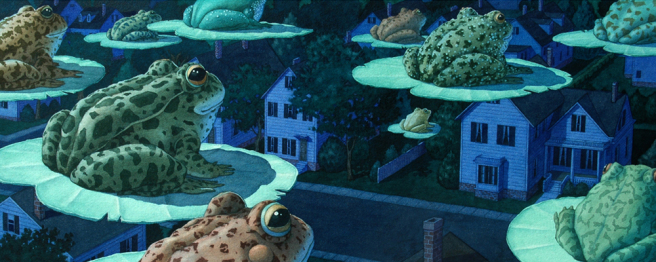
The only words in the book are time stamps. The time stamps are unnecessary and can easily be skipped by a parent. However, if your child is learning to understand time of day, or to read digital time, this could be a useful book for practicing these concepts. The time of day is reinforced by what the people are doing in their daily routines, by the light in the sky, and by the appearance of nocturnal animals.
As I've mentioned before, wordless picture books are the best choice for kids who script. Wiesner's award-winning watercolors are flush with detail and whimsy and are perfect for a child who enjoys labeling funny and odd things.
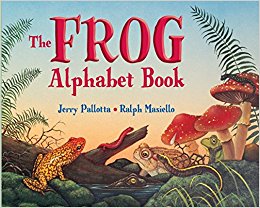
Charlesbridge (1990); paperback, $7.95
A is for Amazon Horned Frog and B is for Blue-legged Strawberry Frog.
Jerry Pallotta's alphabet primers are wonderful books for children who have very intense, focused interests in one of the dozens of themes his series covers. Alphabet primers are great for kids because they have a familiar structure, and that predictability is very grounding for a child and helps them move through a text comfortably.
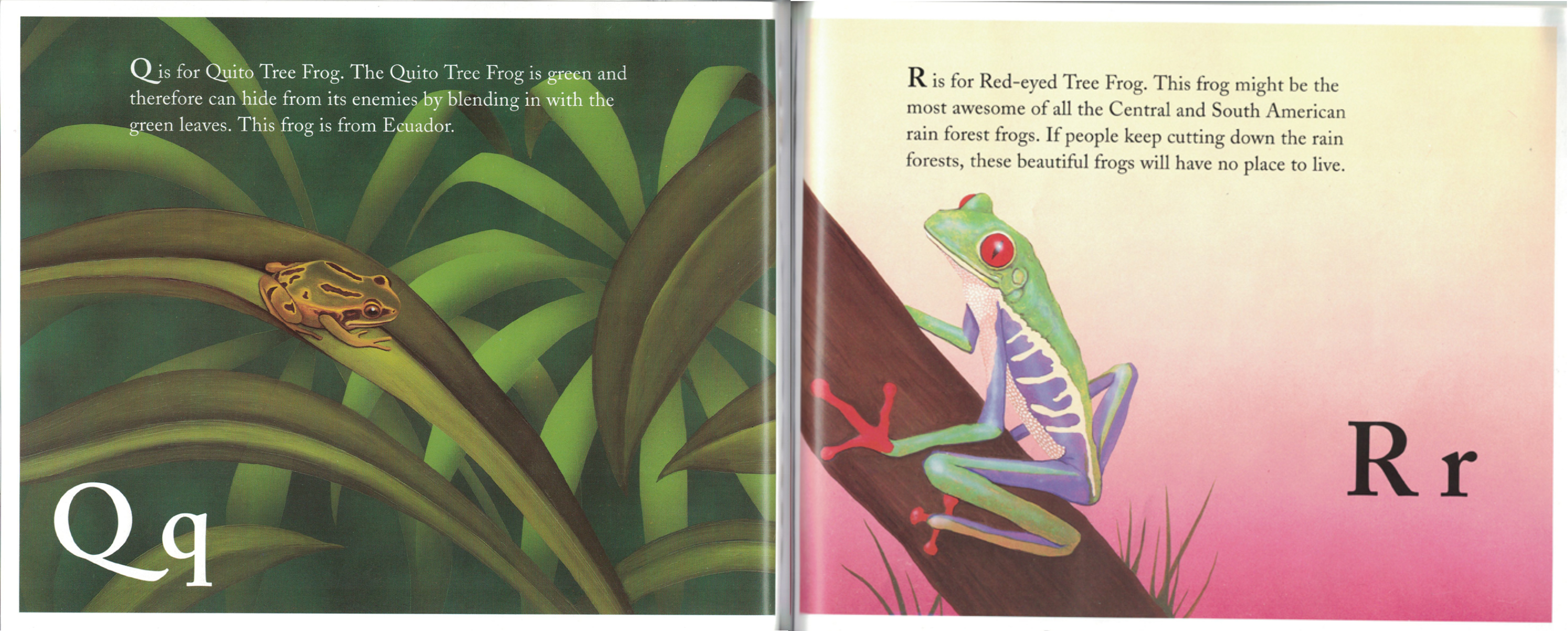
With The Frog Alphabet Book, as with all of his books, be forewarned that each entry is very wordy and often uses vocabulary without explaining its meaning. There is a built-in assumption that the child-reader will learn what things mean via context clues or by asking the adult they are reading with—however, we understand that these are not always good assumptions with our kids. My son Harry is now able to ask me to explain the words he doesn't understand and has the attention span to sit through long paragraphs. This wouldn't have been true 6 months ago. And it is very much not the case for his brother who would never even look at this book except to label the letters and the color of the frogs. Know your little reader!